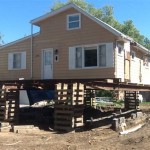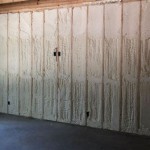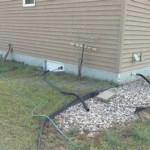Basement Shower Drain Smells Like Sewer: Identifying Causes and Solutions
A persistent sewer smell emanating from a basement shower drain is a common, yet unpleasant, problem for many homeowners. This odor not only creates discomfort but can also indicate underlying plumbing issues that require attention. Identifying the source of the smell is the first step in resolving the problem. Addressing the underlying cause, rather than simply masking the odor, is essential for a long-term solution. This article explores the common causes of sewer smells from basement shower drains and outlines potential remedies for each.
Understanding the Plumbing System: Traps, Vents, and Sewer Lines
To properly diagnose the source of a sewer smell, it is crucial to understand the basic principles of a household plumbing system. Wastewater from every sink, toilet, shower, and appliance exits the house through a network of drainpipes. These drainpipes are connected to the main sewer line, which carries the waste to the municipal sewer system or a septic tank.
Crucial to preventing sewer gases from entering the home are P-traps. A P-trap is a U-shaped pipe section installed under each drain. This section is designed to hold a small amount of water, effectively creating a seal that blocks sewer gases from rising through the drain and into the living space. The water in the P-trap acts as a physical barrier, preventing the escape of noxious and potentially harmful gases.
Vent pipes, also part of the plumbing system, play a vital role in maintaining proper drainage and preventing sewer gases from accumulating. Vent pipes extend from the drain lines, usually through the roof of the house. Their purpose is to allow air to enter the plumbing system, replacing the air that is displaced as wastewater flows through the pipes. Without proper venting, negative pressure can build up in the drain lines, potentially siphoning water from the P-traps, leaving the drain open to sewer gases. Additionally, vents help to equalize air pressure, ensuring wastewater flows smoothly and efficiently.
Common Causes of Sewer Smell Emanating from Basement Shower Drains
Several factors can contribute to sewer odors originating from a basement shower drain. The most common causes are related to the P-trap, venting issues, problems with the sewer line, or bacterial growth within the drain itself.
Dry P-Trap: As mentioned, the P-trap relies on a consistent water seal to block sewer gases. If the shower is infrequently used, the water in the P-trap can evaporate over time, breaking the seal. This allows sewer gases to rise directly through the drain and into the basement. This is particularly common in guest bathrooms or infrequently used showers. Even small cracks or imperfections in the drainpipe can accelerate evaporation.
Blocked or Partially Blocked Vent Pipe: When a vent pipe is obstructed, it can disrupt the proper flow of air within the plumbing system. This can lead to negative pressure in the drain lines, which, as previously noted, can siphon water from the P-traps. Common causes of vent pipe blockage include bird nests, leaves, debris accumulation on the roof vent opening. Older homes with cast iron vent pipes can also experience corrosion and scaling inside the pipes, eventually restricting airflow.
Sewer Line Issues: Problems within the main sewer line, such as cracks, leaks, or blockages, can also contribute to sewer odors emanating from drains. Leaks in the sewer line beneath the basement floor can allow sewer gases to seep into the surrounding soil and eventually into the basement through cracks in the foundation or around the shower drain. Blockages in the sewer line can also cause backups and pressure fluctuations, pushing sewer gases back up through the drain lines.
Biofilm and Bacterial Growth: Over time, a slimy layer of organic matter, known as biofilm, can develop on the inside of drainpipes. This biofilm provides a breeding ground for bacteria that decompose organic waste, producing foul-smelling gases, including hydrogen sulfide, which has a characteristic rotten egg odor. While this issue is less directly related to sewer gases, the resulting smell can be similarly unpleasant and requires attention.
Cracked or Damaged Drain Pipes: Cracks or damage in the drain pipes, especially below the shower floor, can allow sewer gases to escape into the surrounding area. These cracks may not always be immediately visible or result in noticeable water leaks, making them difficult to detect. They can be caused by shifting soil, settling foundations, or aging pipes. Small earth tremors can also cause pipes to crack.
Identifying and Resolving the Source of the Smell
Once the possible causes are understood, a systematic approach to identifying and resolving the issue is crucial. Begin with the simplest solutions and progressively move towards more complex diagnostics and repairs.
Checking and Replenishing the P-Trap: The first step is to confirm whether the P-trap is dry. Pour several cups of water down the shower drain. Allow the water to sit for a few hours to ensure the P-trap is adequately filled. If the sewer smell disappears after adding water, the dry P-trap was likely the culprit. To prevent recurrence, periodically run water down the drain, especially in infrequently used showers. Consider adding mineral oil to the P-trap to slow down water evaporation. Approximately 2 ounces of mineral oil will create a layer on top of the water, significantly reducing evaporation.
Investigating Vent Pipe Blockages: If replenishing the P-trap does not eliminate the sewer smell, the next step is to inspect the vent pipes for potential blockages. This may involve visually inspecting the vent openings on the roof to identify any obvious obstructions, such as bird nests or accumulated debris. Professional plumbers have specialized tools, such as video inspection cameras, to assess the vent pipes internally for more subtle blockages. Removing any identified blockages can restore proper airflow and prevent siphoning of the P-trap. Also, hiring a professional plumber to "snake" the vent pipe can remove any unseen blockage.
Addressing Sewer Line Issues: If the problem persists after addressing the P-trap and vent pipes, potential sewer line issues should be investigated. This often requires professional plumbing assistance. A plumber can perform a sewer line inspection using a camera to identify any cracks, leaks, or blockages. Depending on the severity of the issue, sewer line repairs may involve patching cracks, replacing damaged sections of pipe, or clearing blockages. A professional plumber can provide appropriate advice based on the findings of the inspection. An expert may recommend hydro jetting to clear the blockage.
Cleaning and Disinfecting the Drain: To address the possibility of biofilm and bacterial growth, thoroughly clean the shower drain. Remove the drain cover and manually remove any visible hair or debris. Pour a solution of baking soda and vinegar down the drain, followed by boiling water. The chemical reaction between baking soda and vinegar helps to loosen and dislodge biofilm. Several applications may be necessary. Commercial drain cleaners specifically designed to eliminate organic buildup can also be used, but it is essential to follow the product instructions carefully and avoid using harsh chemicals that could damage the pipes.
Inspecting for Cracked or Damaged Drain Pipes: A visual inspection of the visible sections of drainpipe beneath the shower, if accessible, can help identify obvious cracks or damage. However, hidden cracks may require a professional plumber to locate. They may use specialized equipment, such as smoke testing, to identify leaks in the drainpipe system. This involves introducing non-toxic smoke into the drain system and observing where the smoke escapes, indicating the location of the leak. Once identified, damaged pipes will need to be repaired or replaced by a qualified plumber. Waterproof epoxy can be used for small cracks, while larger cracks may require replacing the entire pipe segment.
Utilizing Professional Plumbing Services: Some sewer smell issues are complex and require specialized expertise. If the source of the odor cannot be identified or resolved through the methods described above, consulting a licensed and experienced plumber is recommended. Plumbers have the knowledge, tools, and experience necessary to diagnose complex plumbing problems and implement effective solutions. They also have tools to detect gas leaks and provide repairs.
Preventative Measures: Once the sewer smell issue has been resolved, implementing preventative measures can help avoid recurrence. Regularly running water down infrequently used drains, maintaining clean drainpipes, and scheduling periodic plumbing inspections can contribute to a healthy and odor-free plumbing system. Regular shower cleaning can prevent issues of blockage.

Sewer Smell In Basement How To Eliminate Foul Odor

Sewer Smell In Basement How To Eliminate Foul Odor

Why Is There A Sewer Smell In My Basement Reddi Plumbing

Get Rid Of Shower Drain Smells Mr Rooter Syracuse

Sewer Smell In The Shower Misterfix It Com

Why Does My Basement Smell Like Sewer

What Causes A Sewer Smell In The Bathroom Make It Right

Plumbing How Can I Prevent Sewer Gas Coming From The Drain Of An Infrequently Used Shower Home Improvement Stack Exchange

Why Does My Shower Drain Smell Maplewood Plumbing

Does Your House Smell Like A Sewer What You Need To Do
Related Posts







